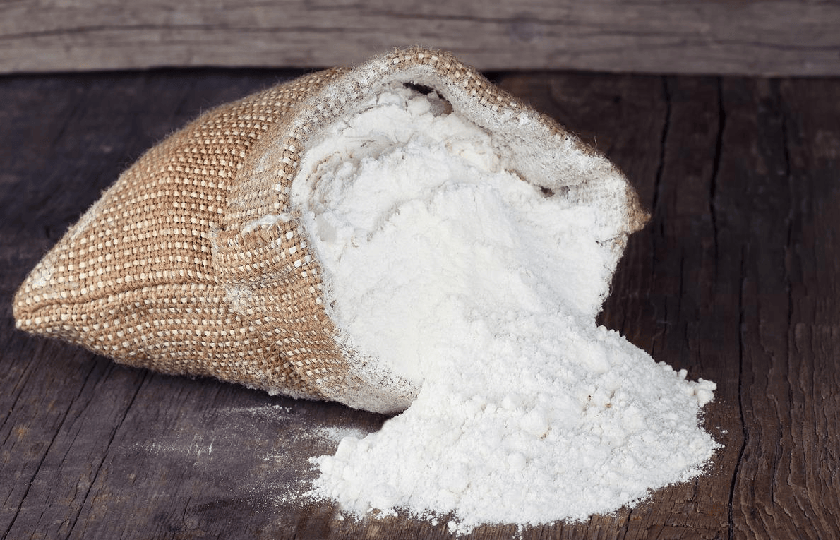Sweet Potato Starch Substitutes: Smart Kitchen Hacks

I'm often asked by my fans with soul-searching questions like: "What should I do if I don't have sweet potato starch on hand and my fried food isn't crispy or my thickening fails?" Today, let's take a look at what alternatives there are to sweet potato starch.
Alternative 1: Tapioca Starch
Similarity: ⭐⭐⭐⭐⭐ (90% compatibility rate)
Why can it replace sweet potato starch?
Overlapping characteristics:
Both are starches that are "gluten-free, highly viscous, and have a strong sense of transparency". After heating, they can form a gel-like texture, making them suitable for thickening, adding viscosity, and making chewy ingredients.
Applicable scenarios:
Bubble tea/Taro balls: The chewiness of tapioca starch is even better than that of sweet potato starch. After cooking, they are as translucent as crystals.
Coating for fried food: When mixed with flour in a 1:1 ratio, the crispness of tempura and chicken cutlets fried with it is comparable to that of the version made with sweet potato starch.
Thick sauce: When thickening, reduce the amount by 10% (tapioca starch has stronger water absorption) to avoid making the sauce become "gluey".
Pitfall guide:
Tapioca starch is not resistant to long cooking. It tends to become thinner when heated for a long time and should be added at the last stage.
Replacement ratio: Replace directly at a 1:1 ratio (but adjust the amount of water according to the dish).
Alternative 2: Corn Starch
Similarity: ⭐⭐⭐⭐ (80% compatibility rate, minor adjustments required)
Why is it the "evergreen tree of substitutes"?
Advantages:
It can be easily bought in supermarkets and is affordable, suitable for most thickening and coating needs.
Shortcomings:
Weaker viscosity: When thickening, add 10% - 15% more than sweet potato starch (for example, if you originally needed 1 spoon of sweet potato starch, use 1.2 spoons of corn starch).
Low transparency: The sauce after thickening is milky white, suitable for Chinese dishes with strong flavors and rich sauces, but not suitable for dishes that require a "translucent look" (such as crystal shrimp dumplings).
Scene-based substitution plans:
Coating for fried food: Mix corn starch and flour (2:1). The fried crispy pork and shrimp cakes have a more fluffy texture, but the crispness is slightly inferior to the version made with sweet potato starch.
Baking applications: When replacing sweet potato starch to make mochi, reduce the amount by 10% (corn starch has weaker water absorption) to avoid making the finished product too soft.
Advanced tips:
Mix corn starch and potato starch in a 1:1 ratio to simulate the balance of "viscosity + transparency" of sweet potato starch, especially suitable for making Korean rice cakes.
Alternative 3: Potato Starch
Similarity: ⭐⭐⭐⭐ (85% compatibility rate, pay attention to flavor differences)
Why can it "pass for the real thing"?
Characteristic comparison:
Viscosity: Higher than corn starch, lower than sweet potato starch. The thickness of the sauce after thickening is moderate.
Transparency: Close to sweet potato starch, suitable for making translucent sauces (such as Japanese teriyaki sauce).
Flavor: Slightly has the fragrance of potatoes. Use it with caution for dishes that are sensitive to taste (such as the thickening sauce for steamed fish).
Scene-based substitution plans:
Chinese thickening: Mix potato starch with water (1:2) evenly, pour it into the hot soup and stir quickly. The sauce is as smooth as silk.
Korean cuisine: When making spicy stir-fried rice cakes, potato starch can perfectly replace sweet potato starch. The rice cakes are soft and not sticky to the teeth.
Baking applications: When replacing sweet potato starch to make puff pastry, increase the amount by 5% (potato starch has stronger water absorption) to avoid making the batter too thin.
Pitfall guide:
Potato starch is easily decomposed by acid and is not suitable for making acidic sauces such as hot and sour soup and ketchup.
Alternative 4: Kudzu Root Starch
Similarity: ⭐⭐⭐ (70% compatibility rate, niche but amazing)
Why is it the "dark horse in the substitute world"?
Characteristics:
Viscosity: Higher than sweet potato starch. The sauce after thickening is "jelly-like", suitable for cold dishes (such as Japanese cold dressing).
Flavor: Slightly has a plant fragrance, suitable for pairing with light ingredients (such as white fish and tofu).
Price: Relatively expensive, but the amount used is less (1 spoon of kudzu root starch = 1.5 spoons of sweet potato starch).
Scene-based substitution plans:
Japanese cuisine: When making chawanmushi, kudzu root starch can replace sweet potato starch for thickening, making the custard smoother and more tender.
Chinese desserts: When replacing sweet potato starch to make mango sago pomelo dessert, reduce the amount (kudzu root starch has strong water absorption) to avoid making the mango puree become "jelly-like".
Healthy alternative: Suitable for those with gluten allergies, but it is prone to clumping at high temperatures. First dissolve it in cold water and then pour it into the hot soup.
How to choose an alternative according to the dish?
For those who pursue ultimate chewiness: Tapioca starch (for pearls and taro balls) > Sweet potato starch > Potato starch.
For those who pursue thick sauce: Sweet potato starch ≈ Potato starch > Corn starch (when thickening is required).
For those who pursue a crispy texture: Sweet potato starch > Corn starch (mixed with flour) > Tapioca starch.
For those with gluten allergies/vegetarians: Kudzu root starch > Tapioca starch > Potato starch (all are gluten-free).
How do you make sweet potato starch at home?
Ingredients:
Sweet potatoes (red-heart sweet potatoes are recommended as they have a high starch content)
Gauze/fine sieve
Large basin, clean water, drying tools (oven)
Steps:
Wash and cut into pieces: Peel the sweet potatoes and cut them into small pieces (the thinner the better to speed up the pureeing process).
Puree and filter:
Use a blender/food processor: Blend sweet potatoes and water (1:1) into a fine slurry.
Filter through gauze: Pour the slurry into the gauze and squeeze out the milky starch water (repeat 3 times).
Settle and let stand: Let the starch water stand for 4 - 6 hours. Pour off the upper clear water. The sediment at the bottom is the wet starch.
Dry and dehydrate:
Natural drying: Spread the wet starch on a bamboo tray and dry it in the sun for 1 - 2 days until it is completely dry.
Oven drying: Bake at a low temperature of 50°C for 2 hours, turning it halfway to prevent burning.
Sift and store: Sift the dry starch through a fine sieve, put it into a sealed jar, and store it away from light for up to 6 months.
Efficiency comparison:
5 pounds of sweet potatoes ≈ 1 pound of homemade starch (the cost is about 1/3 of the supermarket price).
Time consumption: 1 hour for washing and pureeing + 4 hours for settling + 1 day for drying.
Q&A:
Q: What should I do if the starch water is turbid during filtering?
A: Let it stand and pour off the upper clear water. Repeat the filtering 2 - 3 times until the water becomes clear.
Q: Are there impurities in the homemade starch?
A: It's normal! Natural starch contains a small amount of fiber, which has no impact on cooking. If you pursue perfection, you can increase the number of filtrations.

Uses of sweet potato starch
1.Chinese fried dishes:
Deep-fried crispy pork/spare ribs: Coat with a mixture of sweet potato starch and flour (3:1). The outside is crispy and the inside is tender, and the coating doesn't peel off.
Spiced salted shrimp: Make a batter with starch and egg liquid. The shrimp shells are as crispy as paper.
2.Japanese tempura:
Make a batter with sweet potato starch and ice water, and fry at a low temperature. The vegetable tempura is translucent and not greasy.
3.Korean cuisine:
Spicy stir-fried rice cakes: Thicken with starch water. The sauce is thick and coats the rice cakes well.
4.Chinese thickening:
Hot and sour soup/Ma Po tofu: Thicken with starch water (1:3). The sauce is smooth and doesn't separate.
5.Baking thickening:
Mochi/Shaved ice with mashed strawberries and ice cream: Replace glutinous rice flour to make the outer skin, which is chewy and not sticky to the teeth.
6.Bubble tea:
Knead sweet potato starch with brown sugar water into a ball. After cooking, it is translucent and chewy.
7.Dim sum:
Dumplings/Crystal dumplings: Knead dough with starch and wheat starch (1:1). The skin is thin and translucent.
8.Meatball shaping:
Meatballs/Meatballs: Mix starch and minced meat (1:5). The meatballs hold together well.
9.Japanese tea rice:
Add a light thickening of starch water and pour it over salmon tea rice for a denser texture.























